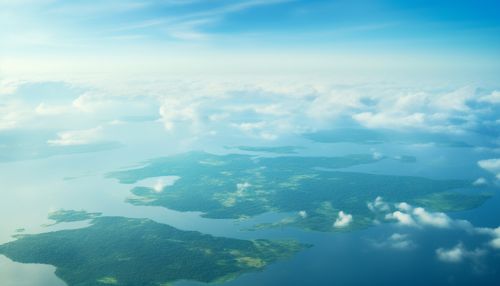Bay of Bengal
Geography
The Bay of Bengal, the largest bay in the world, is a northeastern part of the Indian Ocean. Roughly triangular, it is bordered mostly by India and Sri Lanka to the west, Bangladesh to the north, and Myanmar and the Andaman and Nicobar Islands to the east. The Bay of Bengal occupies an area of 2,172,000 square kilometers. A number of large rivers – the Ganges, Brahmaputra, Ayeyarwady, Godavari, Mahanadi, Krishna and Kaveri – flow into the Bay of Bengal. Among them, Ganges is the largest river and its delta, the Sundarbans, is a UNESCO World Heritage site.


Climate
The Bay of Bengal is known for its tropical monsoon climate, characterized by heavy seasonal rainfall, high temperatures, and high humidity. The Southwest monsoon is the most significant feature of the Bay's climate, causing heavy rainfall in the coastal areas from June to September. The Northeast monsoon, on the other hand, affects the Bay from November to March, causing moderate rainfall in the southeastern coastal areas of India.
Marine Life
The Bay of Bengal is rich in biodiversity, hosting a wide variety of marine life. It is home to a number of endangered species, including the Olive Ridley turtle and the Ganges river dolphin. The Bay also supports the livelihoods of millions of people living along its coasts, with fishing being a major economic activity.
Economy
The Bay of Bengal plays a significant role in the economy of the surrounding countries. It is a major source of fish and seafood for both domestic consumption and export. The Bay is also important for international shipping, with major ports such as Chennai, Kolkata, and Chittagong located on its shores. In recent years, the Bay has gained attention for its potential reserves of oil and natural gas.
History
The Bay of Bengal has a rich history, having been a center of maritime trade and cultural exchange for centuries. It was known to ancient Greek and Roman geographers as the Gangeticus Sinus. During the medieval period, it was a hub for the spread of Buddhism and Hinduism to Southeast Asia. In the modern era, the Bay has witnessed several significant events, including the 1943 Bengal famine and the 1971 Bangladesh Liberation War.
